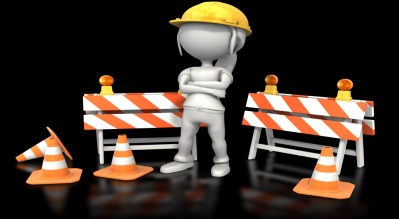Any construction site poses a risk to people who work there. One of the most crucial factors to consider when designing a building project is construction safety. Because of the significant risk of injury and death on building sites, some rules and regulations are required by law, while others are common sense.
Prior to the start of building on a construction site, construction equipment is inspected to verify that a specified standard is maintained and that hazardous conditions are avoided. Pre-start health and safety inspections are becoming more regulated in some areas. For the new building, compliance has grown increasingly demanding.
On the site of every construction project, there is always the risk of injury and maybe death. The majority of construction employees may regard this as a normal aspect of the job. Site supervisors and construction project managers, on the other hand, are expected to order and pass an inspection to make the workers prepare to work safely in the construction industry. Also, ensure that the equipment utilised ensures an optimum level of safety.
Certainly, mental health is a crucial aspect of overall well-being, and it is increasingly recognized as an essential component of construction safety. Integrating mental health considerations into construction site regulations and practices is essential for the holistic health and safety of workers.
What is the importance of health and safety guidelines or training?
Workers, employers, industry, and society as a whole benefit from good health and safety practices on the job. In order to work safely in the construction industry, training related to health and safety should be given so that workers become safer and more productive while businesses grow in size and profit.
The purpose of identifying risks and hazards is to keep employees safe. Not just your employees, but everybody that enters your workplace. This is a legal obligation under health and safety regulations like cpccwhs1001 to prepare to work safely in the construction industry.
Not only that, but occupational injuries can have an impact on attendance and morale. You’ll have a lot less productive site if employees are off due to injuries and their co-workers are terrified or angry about it. If the enforcement authorities find you in violation, you might face penalties, a tarnished reputation, and possibly prison time.
This is critical in any workplace, especially in the Construction industry, but it’s more critical while overseeing a construction project. When compared to other types of firms, construction and industrial industries that deal with hazardous chemicals have some of the most dangerous working environments. If you are not aware of what you are doing and what you should be doing, using powerful tools while working at such tremendous heights can be quite dangerous.
What topics will be covered during the safety training?
Here is a list of topics that reputable training providers cover to give you an idea of what you’ll need to do to get your white card:
Identifying and clarifying the provisions of the Occupational Health and Safety Act
Determining the scope of the responsibility of care
Understanding your obligations if you want to work in the construction sector
Techniques for spotting construction dangers
Contingency planning
Reporting recognised risks (verbally or in writing)
Having a team of knowledgeable persons working for your construction company can help you achieve a higher level of productivity. You’ll be sure to achieve a successful operation and ensure that your workers and the general public are always safe and secure if you follow the Occupational Health and Safety Act law and provide white card training for your personnel. Always keep in mind that a firm that is never disrupted by workplace accidents and illnesses will always be able to achieve high levels of production and profit.
What are the advantages of the training for workers?
It protects them from death. Being sick, injured, or, in the worst-case scenario, dead is not a pleasant experience. There are no “lost wages” or “exorbitant medical bills” to be concerned about. It also improves their morale, productivity, and, as a result, their career.
What are the advantages of health and safety training for businesses?
Fatalities on construction sites result in criminal charges, negative news, a drop in output, and a loss of money. Workers, consumers, and investors all shun risky initiatives, making it even more critical for businesses to prioritise worker health and safety.
Adopting health and safety standards also aids in the completion of projects on schedule and within budget. Workers are more productive in a safe and healthy environment, which benefits the project.
How can you ensure that health and safety regulations are maintained at construction sites?
The companies accomplish this by blocking unauthorised access to the site. Workers who have not received sufficient health and safety training are not permitted to work on construction projects. A CSCS Card is required to demonstrate that you are a safety-trained worker. The catch is that you can’t acquire the card unless you first take a health and safety awareness course and then pass a safety exam that verifies that you’ve developed the ability to keep the workplace safe and healthy. Furthermore, the card verifies that you are a capable worker with good knowledge.
Conclusion:
No employer can claim to have complete control over all of the things that go wrong in the environment. However, they have influence over how they manage their enterprises, such as ensuring that a construction phase health and safety plan is implemented, which is one approach to ensure that the company’s expenses are reduced.

